Inflammation: A Tightly Regulated Biological Response that, if Uncontrolled, Can Turn out Fateful
Key points
- Inflammation is a physiological, tightly regulated, protective process in response to harmful stimuli, such as pathogens, trauma, chemicals, etc.
- Chronic inflammation is associated with the development of severe chronic health issues, such as cardiovascular disease, type II diabetes, cancer, neurodegenerative and autoimmune diseases
- The most important causative factors of chronic inflammation are obesity and specifically visceral fat, stress, sleep disturbances, environmental chemicals, and unhealthy dietary constituents and patterns
- Regular exercise, adherence to healthy dietary patterns, and mind-body interventions have the potential to decrease or even reverse chronic inflammation
Over the last decade, there has been much discussion about inflammation and whether there is such a thing as chronic inflammation, as well as anti-inflammatory agents in terms of food and botanical constituents that could effectively battle it. It seems that it all adds up since chronic inflammation does exist and is at its peak rate, probably due to the contemporary lifestyle. In this post, topics such as what inflammation is as a biological process and what may cause it, its relation to lifestyle factors such as diet, exercise, and environmental chemicals, as well as its implication with chronic severe diseases such as obesity, type II diabetes, and cardiovascular disease will be discussed.
What really inflammation is and how is it caused
Inflammation is a physiological, tightly regulated, protective process in response to harmful stimuli. Insults that can trigger inflammation include:
- Infection from pathogenic microorganisms like bacteria, viruses, or fungi
- Tissue damage from trauma
- Necrotic cells of human tissue remaining after fighting a harmful agent
- External injuries like scrapes
- Effects of irritants and toxic compounds like chemicals
- Irradiation
The goal of inflammation is to destroy the harmful stimuli that initiated it and start the repair process, restoring the involved tissues to their pre-inflamed state and thus re-establishing homeostasis. Therefore, acute inflammation, which resolves in a few days after eradicating the inflammatory stimulus, is a beneficial, biologically appropriate process required for regaining tissue homeostasis after damage within the human body has occurred. Symptoms associated with signs of acute inflammation include redness, heat, swelling, pain, and temporary loss of function at the site of inflammation.
The acute inflammatory response involves the recruitment of immune system cells, known as leucocytes, such as neutrophils, macrophages, monocytes, etc. These cells release inflammatory mediators, including reactive oxygen species (ROS) and inflammatory cytokines, such as interleukin-1 (IL-1), interleukin-6 (IL-6), and tumor necrosis factor-a (TNF-a) to kill the harmful agent. Since the goal of the acute inflammatory response is threat removal, without specificity or selectivity, collateral tissue damage is the inevitable consequence of massive ROS and cytokine production from leucocytes. Nevertheless, the resolution and self-termination of inflammation and the return to baseline status in days to weeks following the eradication of the inflammatory stimulus ensures survival and is not a pathological response.
If this elegant coordination of immune system adaptations fails to resolve or resolves inadequately since the inflammatory stimuli persist or propagate, inflammation can become chronic, self-directed, and thus dangerous. Specifically, the chronicity of inflammation is associated with excessive human tissue damage and various severe disease states, including inflammatory bowel disease, cancer, type II diabetes, heart disease, and autoimmune disorders, such as rheumatoid arthritis, multiple sclerosis, and systemic lupus erythematosus.
Although this relationship is very complicated and has not yet been elucidated, possible mechanisms connecting chronic inflammation with multiple health conditions include its association with elevated blood glucose levels and insulin resistance, with sodium, fluid retention, and hypertension, as well as with persistently elevated levels of cytokines such as IL-6 and C-reactive protein (CRP).
As mentioned above, chronic low-grade inflammation is associated with the development of severe chronic health issues, some of them being among the top causes of death worldwide, such as cardiovascular disease, type II diabetes, obesity, cancer, and neurodegenerative diseases. It could be actually argued that inflammation is not only associated with the disease condition itself but could also be involved in its pathogenesis and progression.
The common feature in these disease states is a silent low-grade inflammatory process, reflected as an increase in systemic plasma concentrations of inflammatory markers, such as cytokines (IL-1, IL-6, TNF-a, CRP, etc.). For instance, higher concentrations of inflammatory markers such as IL-6, TNF-a, and CRP have been shown to be associated with higher cardiovascular risk.
So, how can this chronic silent inflammatory process be triggered? Lifestyle factors, including smoking, alcohol consumption, poor diet, low levels of physical activity, exposure to environmental chemicals, and increased stress, contribute to the development of low-grade inflammation. Hence, strategies to improve overall lifestyle, including adhering to a healthy diet, regular exercise, adequate sleep, and social support, may be an effective approach to prevent chronic inflammation by modifying risk factors for chronic diseases associated with it.
The most important causative factors of chronic inflammation are discussed below.
Obesity and its central role in chronic inflammation
The vast majority of human fat tissue is of the white type; this type of fat is mainly located beneath the skin (subcutaneous adipose tissue) and around internal organs (visceral adipose tissue). White adipose tissue is not only an energy storage place but is also metabolically active, regulating several metabolic pathways, including immunity and inflammation. Specifically, adipocytes secrete numerous hormones and cytokines, collectively called adipokines. Some of them are pro-inflammatory, such as the hormones leptin and resistin, and the cytokines IL-6, CRP, and TNF-a, and some of them are anti-inflammatory, such as the hormone adiponectin.
While research has shown an association between both central obesity (visceral fat) and total obesity and inflammation, increased visceral fat is the primary source of chronic systemic low-grade inflammation.
Although the association is not clear yet, it seems that the link between central obesity and inflammation is the oversecretion of pro-inflammatory adipokines and free fatty acids by the visceral fat of obese individuals.
More specifically, obesity is linked to the enlargement of adipocytes (hyperplasia), leading to hypoxic conditions within these cells. As a result, a local inflammatory response is triggered, with the recruitment of immune cells, such as macrophages, and the subsequent accumulation of the pro-inflammatory cytokines IL-6 and TNF-a. IL-6, in turn, stimulates CRP production in the liver and the employment of more immune cells. Simultaneously, since fat tissue has a limited capacity to store energy, once this is exceeded, like in hyperplastic fat cells, lipolysis occurs within the cells, causing a release of free fatty acids into the circulation. Free fatty acids reinforce the release of pro-inflammatory cytokines and also directly mediate the inflammatory process.
The association between visceral fat and inflammation is actually proportional, meaning the higher the body weight and the body fat, the higher the levels of the pro-inflammatory adipokines and, therefore, the higher the level of inflammation.
It’s thus becoming evident that obesity predisposes to a pro-inflammatory state. Inflammation results in the massive production of ROS, also leading to oxidative stress. Both oxidative stress and inflammation statuses are strongly associated with chronic severe health complications, including cardiovascular disease, insulin resistance, hypertension, type II diabetes, obstructive sleep apnea, rheumatoid arthritis, dementia, and cancer. Therefore, obesity, especially large visceral fat volumes (central obesity), through its chronic inflammatory components, is involved in the pathogenesis and progression of cardiometabolic, neurodegenerative, and autoimmune diseases.
Inflammation caused by dysregulated sleep patterns
Lifestyle behaviours like sleep have been linked to heightened inflammatory responses.
Moreover, sleep issues have been associated with an increased risk of multiple inflammatory disorders, including cardiovascular disease and neurodegenerative diseases.
So, could chronic inflammation be the link connecting sleep issues with adverse public health outcomes?
Indeed, sleep disturbances in terms of sleep deprivation, insomnia, sleep restriction (sleeping less than 5 hours per night), and sleep fragmentation (nocturnal waking for ≥ 90 minutes) lead to increased inflammation due to changes in the immune system that trigger inflammatory responses.
A possible mechanism is that sleep disturbances induce a shift in the temporal profile of inflammatory responses, with increased production of the pro-inflammatory cytokines IL-6 and TNF-a during the day rather than during the night, leading to excessive levels of inflammation. Due to the increased production of IL-6, there is also a subsequent overproduction of CRP, further propagating inflammation. If the sleep disturbance is persistent, it leads to sustained activation of the inflammatory response and, thus, chronic inflammation.
Inflammation caused by chronic stress
Chronic stress in major life domains (relationships, work, finances) stimulates chronic inflammation in both men and women, which is reflected in the elevated CRP levels.
Additionally, emerging research suggests that social support and network may have a role in mitigating the psychological impact of major life stressors, thus attenuating their potential to cause chronic inflammation.
Moreover, mind-body interventions such as tai chi and meditation are emerging as promising strategies to reduce stress and thus decrease or even reverse inflammation, with effects on the severity or even the prevention of pathologies related to chronic inflammation, such as neurodegenerative and autoimmune diseases.
Inflammation caused by environmental chemicals
Chemical exposure in the environment, including long-term exposure to polycyclic aromatic hydrocarbons (PAHs), perfuoroalkyl substances (PFAs), and metal exposure, is responsible for causing chronic inflammatory responses.
PFAs have significant bioaccumulation potential and are widely used in food packaging, household cleaning products, cosmetics, etc.
PAHs are a group of chemicals formed during the incomplete combustion of coal, oil, gas, and garbage, including vehicle exhaust, coal tar, wildfires, agricultural burning, etc.
Regarding metal exposure, arsenic is a toxic metal widely distributed in the environment and is present in soil, food, and water, leading to unavoidable human exposure. Cadmium is mainly released from nickel-cadmium batteries, plastic stabilizers, fossil fuel combustion, and garbage incineration. Mercury pollution primarily comes from burning coal, non-ferrous metals, and cement production.
All these environmental pollutants can enter the human body through the respiratory tract, digestive tract, and skin and interact with the immune system, inducing a chronic inflammatory response and, thus, the possibility of chronic inflammatory diseases, such as cancer and autoimmune disorders.
The implication of exercise with chronic inflammation
Physical inactivity is one of the most important lifestyle factors associated with persistent systemic low-grade inflammation and, thus, an increased likelihood of inflammatory diseases. On the other hand, regular exercise possesses anti-inflammatory effects, thereby reducing disease risk.
The anti-inflammatory effects of regular exercise are attributed to several mechanisms, the most critical of which are increased fat oxidation and reduced visceral body fat stores. Specifically, exercise results in an increased skeletal muscle capacity to burn fat, resulting in increased fat oxidation in mitochondria and decreased overall lipid storage inside cells. Consequently, exercise helps limit visceral fat accumulation and adipose tissue expansion. Since fat tissue and visceral fat, in particular, are metabolically active and release pro-inflammatory mediators, as stated before, exercise limits inflammation activation by downregulating these pro-inflammatory mediators, including cytokines. Specifically, it has been shown that regular exercise reduces the levels of IL-1 and IL-6.
Moreover, active skeletal muscles secrete molecules known as myokines, which help counterbalance the pro-inflammatory effects of cytokines.
Since the inflammatory effects of physical inactivity run mostly through its impact on visceral fat and obesity, it could be supported that a link between physical inactivity, visceral fat accumulation (central obesity), and inflammation likely exists. However, the association between chronic systemic inflammation and physical inactivity is independent of obesity status.
Collectively, regular physical activity and its associated fat loss may offer prevention and treatment for various chronic diseases associated with low-grade inflammation. It is inexpensive and without the side effects of many pharmacological therapies and could be viewed as a natural remedy for recovering part of the inflammatory burden caused by modern lifestyles.
The implication of diet with chronic inflammation
Primarily, nutrition serves as the source of essential nutrients, providing energy and substrates for numerous metabolic functions.
In cases of obesity and, thus, chronic inflammation, a dietary pattern encompassing caloric restriction has been proven effective in reducing inflammation and metabolic dysfunction related to obesity status.
Besides the caloric restriction that can reduce chronic inflammation by decreasing visceral fat, several studies demonstrate an inverse association between inflammatory markers and adherence to healthy dietary patterns. Specifically, nutritional factors such as dietary fiber, antioxidants, and omega-3 fatty acids have been associated with decreased concentrations of inflammatory markers. In contrast, dietary factors, such as trans and saturated fat, sugar, and sodium, have been associated with increased levels of inflammation.
- Dietary fiber
- Fiber-rich diets are often associated with a high intake of antioxidants and complex carbohydrates, both of which may reduce inflammation. Another anti-inflammatory mechanism of fiber is its conversion into immune-regulating substances, such as short-chain fatty acids, by the gut microbiota in the colon. These substances activate signaling pathways, eventually decreasing the inflammatory response by reducing the pro-inflammatory cytokines IL-6, TNF-a, and CRP production.
- Polyphenols
- Polyphenols are a heterogeneous group of bioactive substances found in plant-based foods. They are known to have potent antioxidant and anti-inflammatory effects, thanks to their ability to reduce ROS and the pro-inflammatory cytokines IL-6 and TNF-a, respectively.
- Omega-3 fatty acids
- Omega-3 fatty acids such as eicosapentaenoic acid (EPA) and docosahexaenoic acid (DHA) are found in fish and fish oils and are considered anti-inflammatory. They have been shown to improve markers of cardiovascular disease, rheumatoid arthritis, and cancer cachexia, all disease states associated with chronic inflammation.
- Trans fatty acids
- Trans fatty acids have predominantly pro-inflammatory properties by activating inflammatory pathways and increasing oxidative stress through increased ROS production. Their primary source is partially hydrogenated oils, usually the result of industrial food processing. They are also partly derived from ruminant animal products.
- Saturated fat
- Similarly to trans fatty acids, saturated fat also seems to exert pro-inflammatory effects due to increased production of ROS and activation of pro-inflammatory pathways.
- Sugar
- Food products with high levels of free-added sugar seem to have enhanced pro-inflammatory effects and may be linked to the development of chronic diseases associated with inflammatory processes, such as atherosclerosis, cancer, and Alzheimer’s disease. A possible explanation is a chronic and exaggerated increase in blood glucose caused by such foods, which can lead to the excessive formation of advanced glycation end products (AGEs). AGEs may cause oxidative stress and trigger inflammatory responses.
- Dietary patterns
- High adherence to the Mediterranean diet or the DASH (Dietary Approaches to Stop Hypertension) has been associated with decreased CRP, IL-6, and TNF-a levels, as well as oxidative stress biomarkers. The high content of anti-inflammatory nutrients such as omega-3 fatty acids, dietary fiber, complex carbohydrates, and polyphenols may explain the consistent anti-inflammatory effects of such diets, which are rich in fruits, vegetables, legumes, and whole grains.
- Also, adherence to a Paleolithic diet, rich in plant-based and non-processed animal products but low in processed foods, added sugars, salt, and dairy, has also been linked to a decrease in inflammation markers, especially CRP and oxidative biomarkers. In contrast, the ‘’Western’’ dietary pattern rich in processed meats, refined grains, and sugary beverages is linked to increased inflammatory markers.
To sum up, the battlefronts of chronic inflammation are multiple, and if silently working chronically without us making lifestyle changes to decrease them or even completely eradicate them, they can lead to severe health issues that can compromise quality of life and reduce lifespan. However, the ability of inexpensive and undemanding remedies, such as diet, exercise, meditation, etc., to effectively combat chronic inflammation is in front of our eyes and the palm of our hands, so it should not be neglected.
References
1. Alexopoulos N, Katritsis D, Raggi P. Visceral adipose tissue as a source of inflammation and promoter of atherosclerosis. Atherosclerosis. 2014;233(1):104-112. DOI: 10.1016/j.atherosclerosis.2013.12.023
2. Bruckner F, Gruber JR, Ruf A, Thanarajah SE, Reif A, Matura S. Exploring the link between lifestyle, inflammation, and insulin resistance through an improved Healthy Living Index. Nutrients. 2024;16(3):388. DOI: 10.3390/nu16030388
3. Burini RC, Anderson E, Durstine JL, Carson JA. Inflammation, physical activity, and chronic disease: An evolutionary perspective. Sports Med Health Sci. 2020;2(1):1-6. DOI: 10.1016/j.smhs.2020.03.004
4. Ellulu MS, Patimah I, Khaza’ai H, Rahmat A, Abed Y. Obesity and inflammation: the linking mechanism and the complications. Arch Med Sci. 2017;13(4):851-863. DOI: 10.5114/aoms.2016.58928
5. Hess JM, Stephensen CB, Kratz M, Bolling BW. Exploring the links between diet and inflammation: Dairy foods as case studies. Adv Nutr. 2021;12(Suppl1):1S-13S. DOI: 10.1093/advances/nmab108
6. Irwin MR, Sleep and inflammation: partners in sickness and in health. Nat Rev Immunol. 2019;19(11):702-715. DOI: 10.1038/s41577-019-0190-z
7. Khanna D, Khanna S, Khanna P, Kahar P, Patel BM. Obesity: A chronic low-grade inflammation and its markers. Cureus. 2022;14(2):e22711. DOI: 10.7759/cureus.22711
8. Liu Y, Zhang Z, Han D, Zhao Y, Yan X, Cui S. Association between environmental chemicals co-exposure and peripheral blood immune-inflammatory indicators. Front Public Health. 2022;10:980987. DOI: 10.3389/fpubh.2022.980987
9. Oronsky B, Caroen S, Reid T. What exactly is inflammation (and what is it not?). Int J Mol Sci. 2022;23(23):14905. DOI: 10.3390/ijms232314905
10. Ricordi S, Garcia-Contreras M, Farnetti S. Diet and inflammation: Possible effects on immunity, chronic diseases, and life span. J Am Coll Nutr. 2015;34Suppl1:10-13. DOI: 10.1080/07315724.2015.1080101
11. Sotos-Prieto M, Bhupathiraju SN, Falcon LM, Gao X, Tucker KL, Mattei J. Association between a Healthy Lifestyle Score and inflammatory markers among Puerto Rican adults. Nutr Metab Cardiovasc Dis. 2016;26(3):178-184. DOI: 10.1016/j.numecd.2015.12.004
12. Stumpf F, Keller B, Gressies C, Schuetz P. Inflammation and nutrition: Friend or foe? Nutrients. 2023;15(5):1159. DOI: 10.3390/nu15051159
An Ounce of Prevention - Hyperion Health Blog




